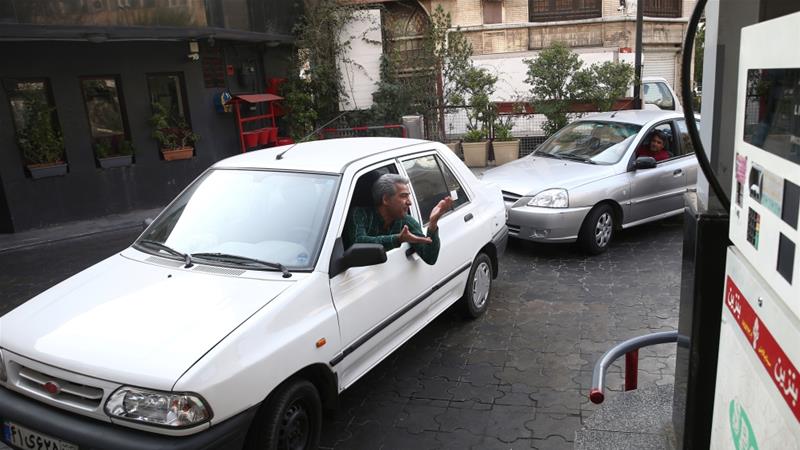One person was killed in Iran’s southern province of Kerman during protests that erupted after the government imposed gasoline rationing and price hikes of at least 50 percent.
“Unfortunately one person was killed [in Sirjan] during the protests, but it is still unclear why this person was killed,” said the police commander of Sirjan, Mohammad Mahmoudabadi, adding, “we are investigating whether he was killed by the security forces who were trying to bring back calm to the city,” Iranian Students’ News Agency reported on Saturday.
“The situation is calm in the city today, and everything is under control since last night,” Mahmoudabadi said.
The demonstrations broke out a day earlier, hours after the government announced that the price of gasoline, or petrol, would increase by 50 percent for the first 60 liters (15.9 gallons) and 200 percent for anything above that each month.
Speaking in a meeting with cabinet members on Friday, President Hassan Rouhani stressed the need for the move, saying, “this move will be beneficial to lower-income classes and can be effective in resolving their problems.”
“The main goal of this move was to decrease the pressure that is on people on the one hand, and not increase the price for those who consume a normal amount of petrol. This is why we set a price for the first 60 liters and an unsubsidized price for any amount above that”.
Protesters have taken to the streets to protest the price hike in 37 Iranian cities, including major cities of Tehran, Tabriz, Mashhad, Shiraz, Gorgan, Khorramabad, Qom, Ilam and Karaj, according to Peyk-e Iran.
The National Iranian Oil Products Distribution Company said in a statement on November 14 that the price of a liter of regular gasoline – a little over a quarter of one gallon – had gone up to 12.7 U.S. cents from 8.5 U.S. cents and the monthly ration for each private automobile was set at 60 liters per month. Additional purchases would cost 25.4 U.S. cents per liter. While such hikes may seem minuscule – and gasoline priced cheaply – to Americans, for example, for sanctions-hit and economically-stressed Iran, they are significant.
Mohammad Bagher Nobakht, the head of the Planning and Budget Organisation, said the hike is expected to bring in $2.55 billion per year to the Iranian exchequer.
Iran's economy has been battered since May 2018 when U.S. President Donald Trump unilaterally withdrew the United States from the nuclear agreement brokered in 2015 under the Obama administration, and re-imposed tough sanctions. Iran’s national currency, the Iranian rial, has plummeted in value against the U.S. dollar, and inflation is now running at more than 40 percent. The International Monetary Fund expects Iran's economy to contract by nine percent this year and stagnate in 2020.







 President Ilham Aliyev shed light on the evolving contours of the peace process with Armenia during an international conference in Baku this week. ...
President Ilham Aliyev shed light on the evolving contours of the peace process with Armenia during an international conference in Baku this week. ...
 Azerbaijan and Armenia started the process of demarcation of their border on Tuesday, with the installation of the first border markers based on ge...
Azerbaijan and Armenia started the process of demarcation of their border on Tuesday, with the installation of the first border markers based on ge...
 Armenian sappers commenced on Monday mine-clearance operations in the territories adjacent to the Saint Mary Church in village of Voskepar (Armenia...
Armenian sappers commenced on Monday mine-clearance operations in the territories adjacent to the Saint Mary Church in village of Voskepar (Armenia...
 President Aliyev emphasized the critical role of the North-South Transport Corridor in fostering transport cooperation between Azerbaijan and Russi...
President Aliyev emphasized the critical role of the North-South Transport Corridor in fostering transport cooperation between Azerbaijan and Russi...
 As the conflict between Ukraine and Russia escalates, the strategic importance of Kharkiv, Ukraine's second-largest city, has come sharply into focus.
As the conflict between Ukraine and Russia escalates, the strategic importance of Kharkiv, Ukraine's second-largest city, has come sharply into focus.



